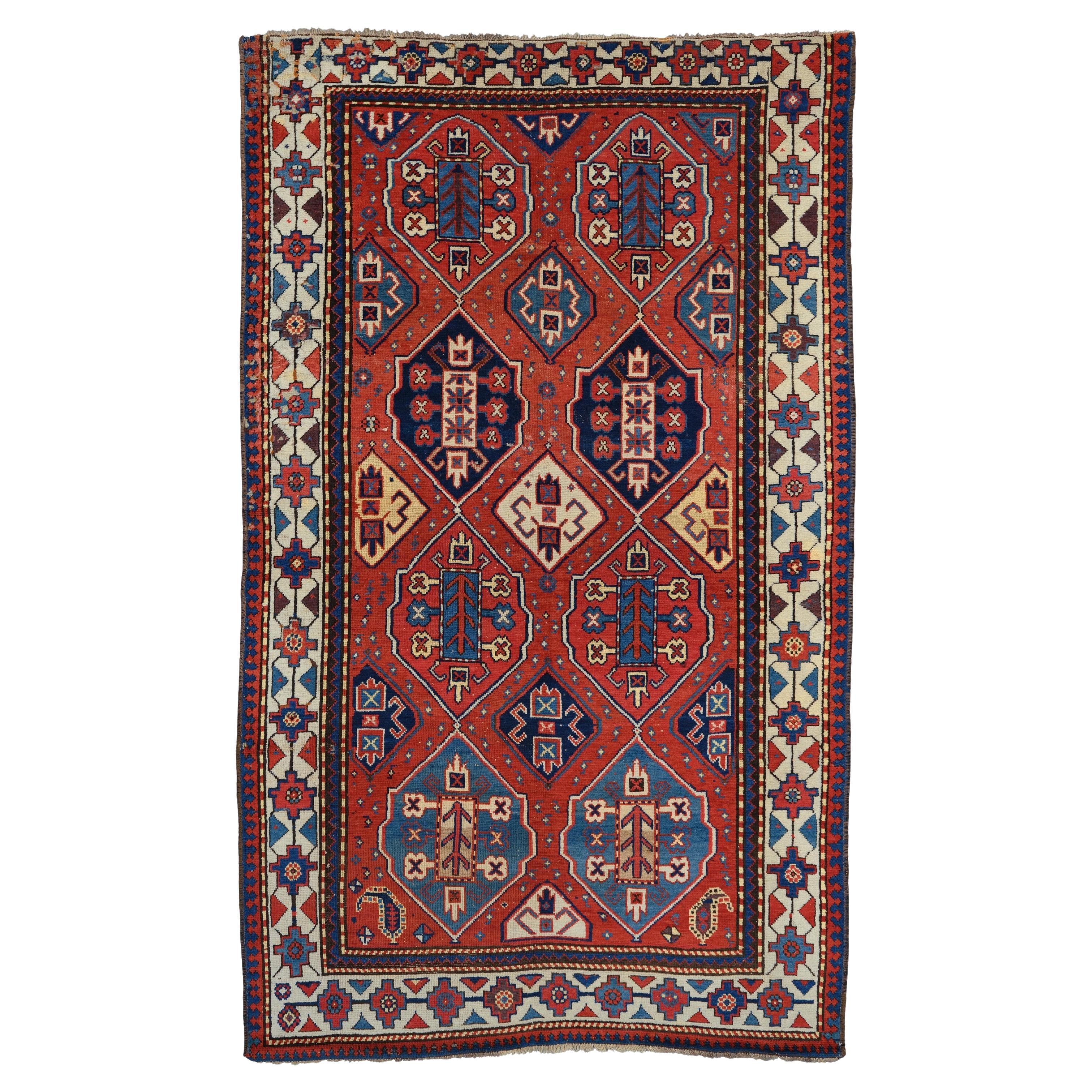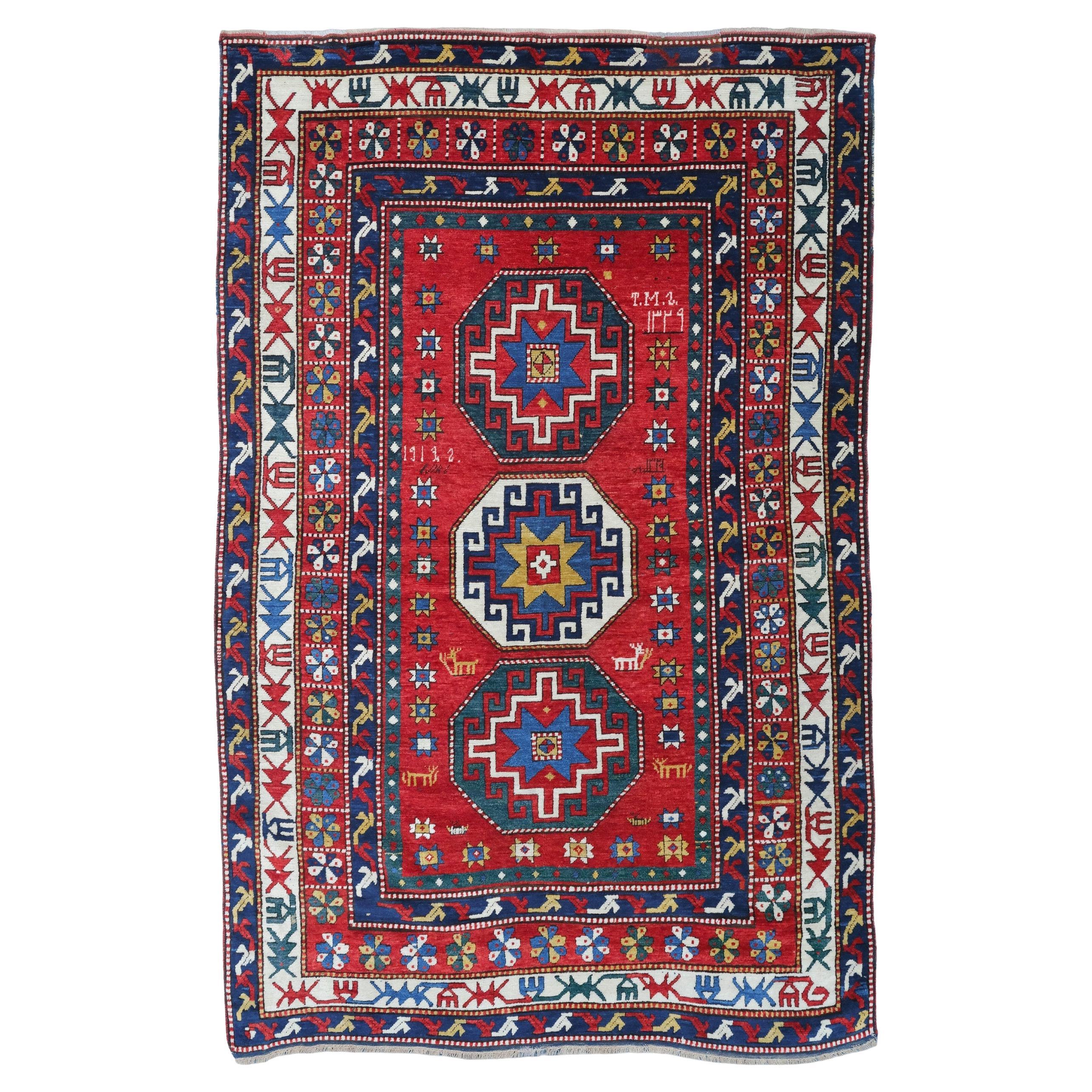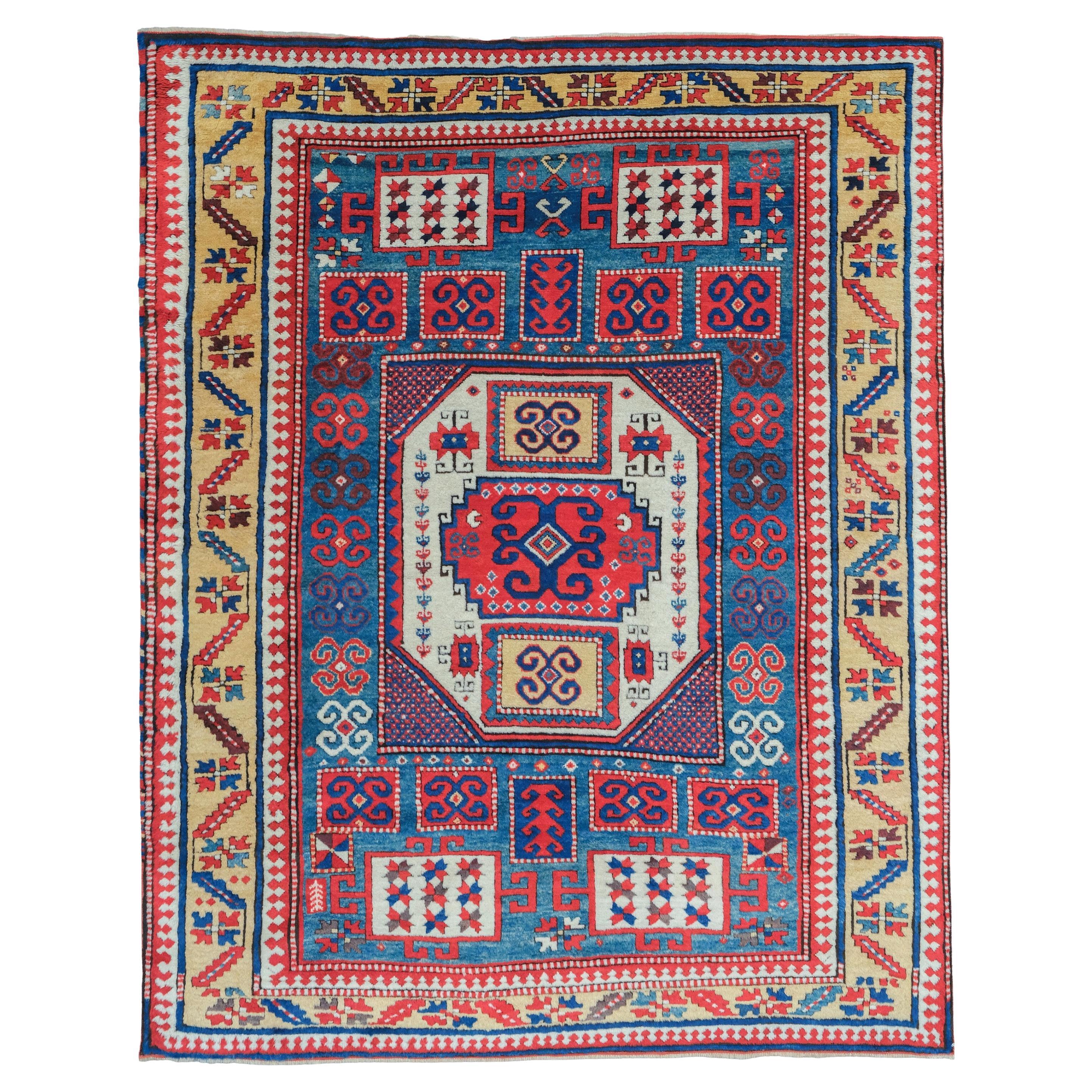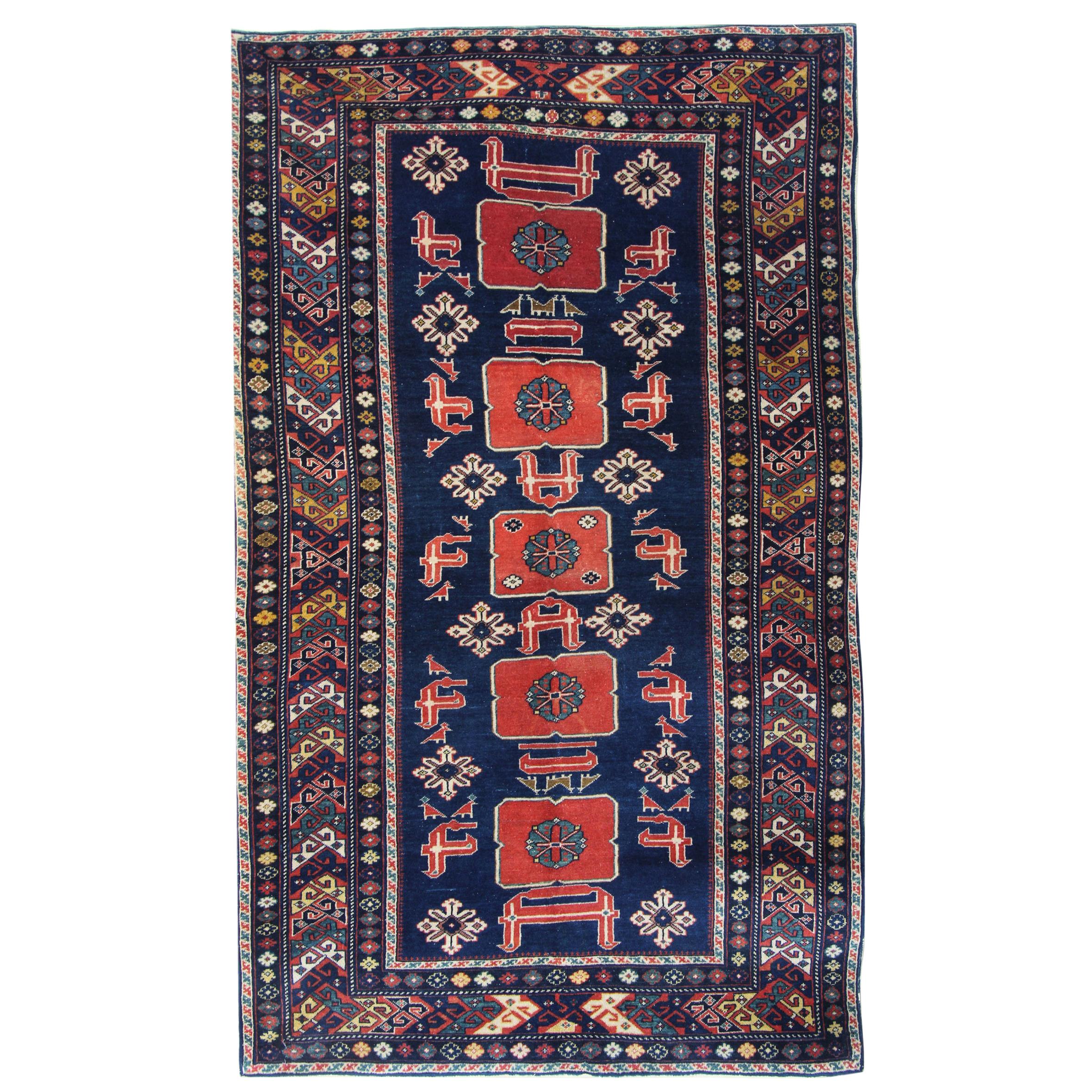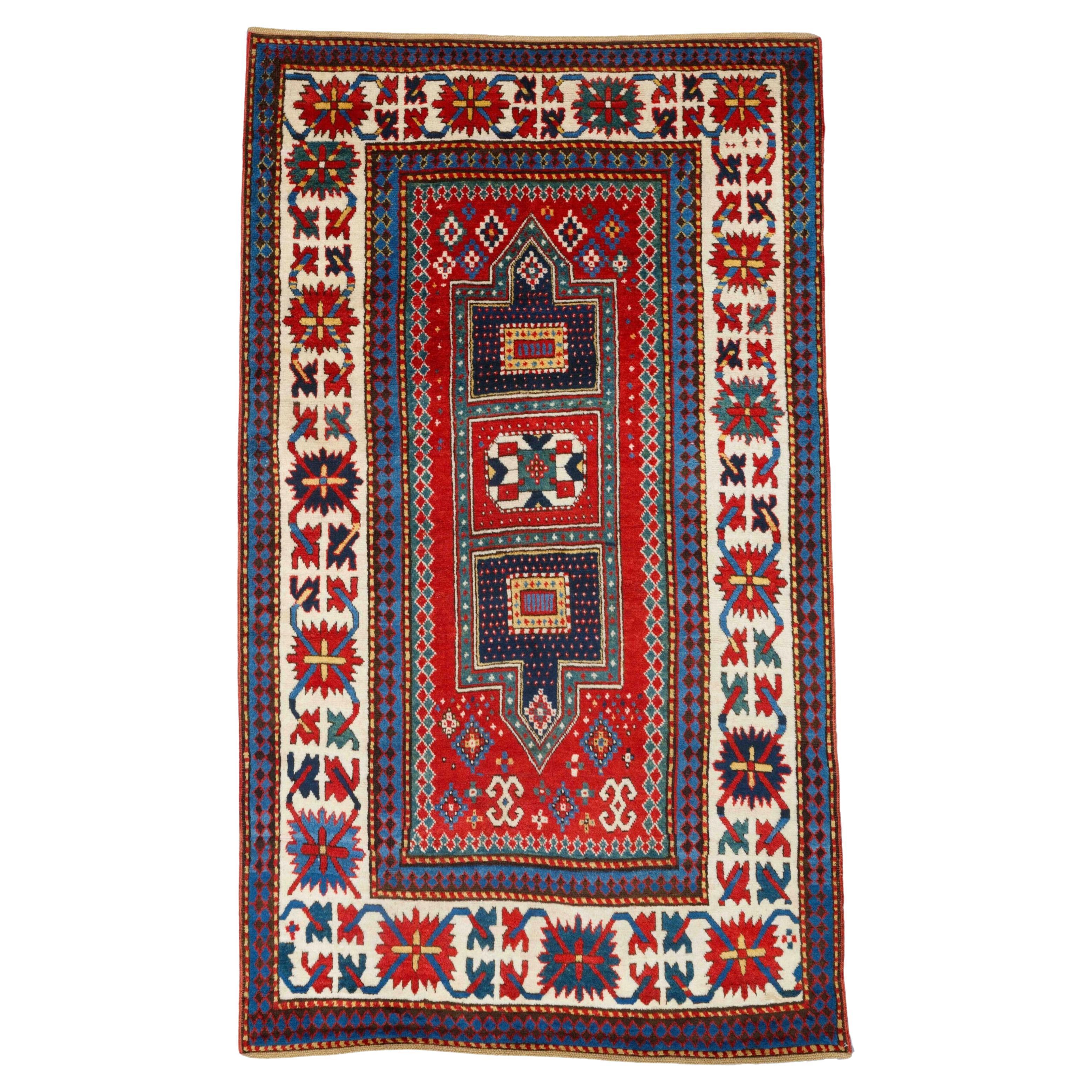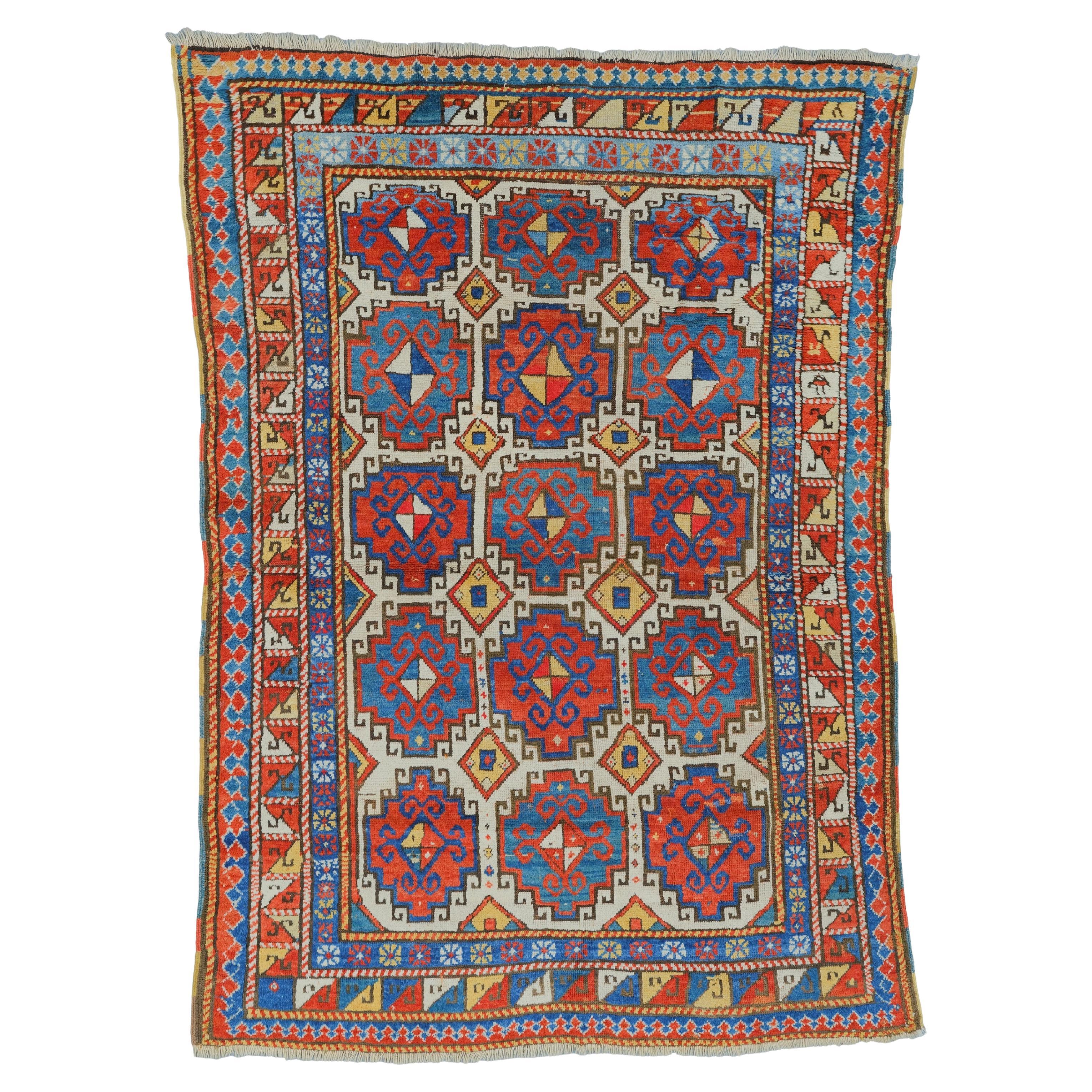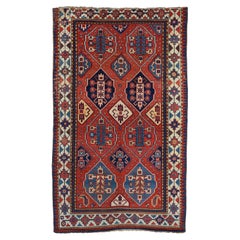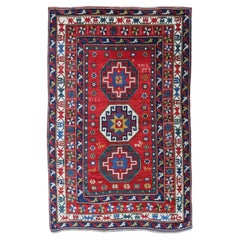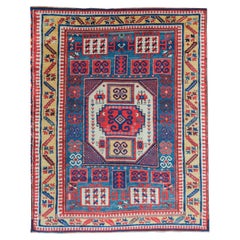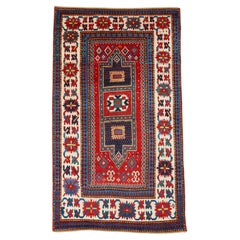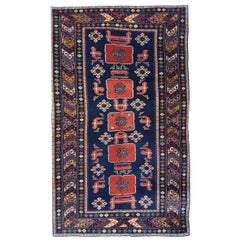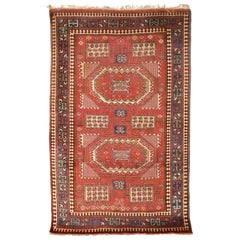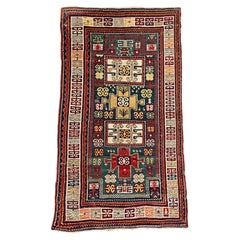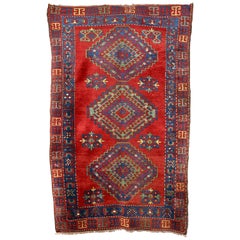Items Similar to Antique Caucasian Rug - Rare Caucasian Carpet, Caucasus Rug, Antique Rug
Video Loading
Want more images or videos?
Request additional images or videos from the seller
1 of 7
Antique Caucasian Rug - Rare Caucasian Carpet, Caucasus Rug, Antique Rug
$46,000
£35,169.45
€40,508.10
CA$64,460.10
A$71,963.64
CHF 37,707.87
MX$880,905.64
NOK 478,890.29
SEK 451,532.74
DKK 302,316.12
Shipping
Retrieving quote...The 1stDibs Promise:
Authenticity Guarantee,
Money-Back Guarantee,
24-Hour Cancellation
About the Item
Rare Caucasian Rug Caucasus Rug
Size: 176×224 cm
This wonderful rug is a formerly unpublished addition to a small and rare group of blue-ground Caucasian rugs whose design is dominated by a prominent decahedral gabled ivory medallion. The overall pattern echoes that of a group of earlier 17th and 18th century north west Persian carpets, whose designs were based upon the Persian garden plan known as the “Four Gardens” or Chahar Bagh (M.S.Dimand & J. Mailey, Oriental Rugs in the Metropolitan Museum of Art, New York, 1973, p.84, fig.116). The smaller lozenges that extend above and below the central medallion on the present lot, are linked by a narrow vertical channel which represents the streams and ornamental pools that feed the flowering trees and shrubs on either side. The once eight-pointed medallion, that is an archaic form found in early Anatolian and Caucasian rugs, and which continues to be used throughout the nineteenth century in Fachralo rugs, here has been simplified to just six points. Further more, the formerly square compartments filled with trees, are replaced here with “Memling” guls, most commonly associated with the weavings from the Moghan district in the Caucasus.
The motif that remains open to interpretation however, is the zoomorphic form within each corner of the ivory medallion. Although they resemble four-legged animals with a blunt hammer-head, it is more probable that these heavily abstracted forms represent the branched fruiting trees, that became increasingly geometric in form in the ‘Garden’ carpets woven in the latter years of the 18th century.
Eight other examples have been published, one in the Rudnick Collection, which is dated and most likely reads 1833 (J. Bailey and M. Hopkins, Through the Collector’s Eye – Oriental Carpets from New England Private Collections, Providence Rhode Island 1991, p.66, no.20); one by E. Gans-Ruedin, Caucasian Carpets, New York, 1986, pl.118, two by Eberhart Herrmann; the first dated to either 1844 or 1850 (E. Herrmann, Seltene Orienteppiche IV, Munich, 1982, p.152, no.46 and Herrmann, Kaukasische Teppichkunst Im 19. Jahrhundert Ein Bilderbuch, Munich 1993, p.61, pl.45); one of slightly shortened proportions by Ian Bennett, (Bennett, Oriental Rugs, Volume I Caucasian, London, 1981, p.79, no.66), two examples that sold at auction in the same week; Sotheby’s London, 28 April 1993, lot 16 and Christie’s London, 29 April 1993, lot 357, and the most recent to appear on the market which sold in these Rooms, 26 October 2017, lot 313. The Gans-Ruedin and Bennett examples, display two columns of double ‘Memling’ guls above and below the central medallion while the others all have three.
Apart from the Rudnick example which has a ‘Shield’ border, all of the other rugs share the same border pattern that consists of a series of small hexagons enclosing a large ‘S’ motif, with every other hexagon set within paired double-ended zoomorphs. The origin of this design stems from earlier Caucasian ‘Dragon’ carpets, and is almost identical to that of an eighteenth century east Caucasian rug, formerly in the collection of the late Peter Lehmann-Bärenklau, which sold in these Rooms, 19 April 2016, lot 20. The border is most frequently flanked by white ground guard stripes which display small flowerheads with a further inner frame of small space-invader motifs. Unique to the group, the present lot has an arrangement of small alternating yellow and ivory flower heads forming an additional frame within the central field which also sees the inclusion of two human figures flanking the central medallion.
- Dimensions:Width: 69.3 in (176 cm)Length: 88.19 in (224 cm)
- Materials and Techniques:
- Place of Origin:
- Period:
- Date of Manufacture:1800's
- Condition:
- Seller Location:Sultanahmet, TR
- Reference Number:1stDibs: LU7849238014192
About the Seller
4.7
Vetted Professional Seller
Every seller passes strict standards for authenticity and reliability
Established in 1989
1stDibs seller since 2022
12 sales on 1stDibs
Typical response time: <1 hour
- ShippingRetrieving quote...Shipping from: Sultanahmet, Turkey
- Return Policy
Authenticity Guarantee
In the unlikely event there’s an issue with an item’s authenticity, contact us within 1 year for a full refund. DetailsMoney-Back Guarantee
If your item is not as described, is damaged in transit, or does not arrive, contact us within 7 days for a full refund. Details24-Hour Cancellation
You have a 24-hour grace period in which to reconsider your purchase, with no questions asked.Vetted Professional Sellers
Our world-class sellers must adhere to strict standards for service and quality, maintaining the integrity of our listings.Price-Match Guarantee
If you find that a seller listed the same item for a lower price elsewhere, we’ll match it.Trusted Global Delivery
Our best-in-class carrier network provides specialized shipping options worldwide, including custom delivery.More From This Seller
View AllAntique Caucasian Rug - 19th Century Antique Caucasian Rug, Antique Rug
Located in Sultanahmet, 34
Antique Caucasian Rug
19th Century Antique Caucasian Rug
Size: 142x234 cm 7,90x7,67 Ft
This 19th-century Caucasian rug adds nobility to any space with its historical beauty and art...
Category
Antique 19th Century Caucasian Caucasian Rugs
Materials
Wool
20th Century Antique Caucasian Rug (1912 Dated)
Located in Sultanahmet, 34
This antique Caucasian rug dates from the early 20th century and is notable for its rich color palette and intricate patterns. The center of the carpet is decorated with three large ...
Category
20th Century Caucasian Caucasian Rugs
Materials
Wool
Antique Caucasian Karachop Rug - Early 19th Century Antique Caucasian Rug
Located in Sultanahmet, 34
This antique Karatchop rug is a rare and valuable piece from the early 19th century. The carpet attracts attention with its rich color palette and complex patterns. The central motif...
Category
Antique Early 19th Century Caucasian Caucasian Rugs
Materials
Wool
Antique Caucasian Rug - Middle of 19th Century South West Caucasian Rug
Located in Sultanahmet, 34
Middle of 19th Century South West Caucasian Rug Very good condition, with the original end and side finishes.Size 140 x 242 cm (4,59 - 7,93 ft)
This carpet is a rare and valuable Ca...
Category
Antique Mid-19th Century Caucasian Caucasian Rugs
Materials
Wool
Middle of 19th Century Caucasian Moghan Rug - Antique Rug, Handmade Rug
Located in Sultanahmet, 34
Art Bearing the Traces of Time: Mid-19th Century Antique Caucasian Moghan Carpet
This antique Caucasian Moghan carpet is a unique work of art from the mid-19th century. With its ric...
Category
Antique Mid-19th Century Caucasian Caucasian Rugs
Materials
Wool
Antique Caucasian Rug - Late Of The 19th Century Caucasian Rug, Antique Rug
Located in Sultanahmet, 34
Antique Caucasian Rug - Late Of The 19th Century Caucasian Rug. in Good Condition. Size 107 x 220 (3,51 - 7,21 ft)
If you want to add a historical touch to your home or office, this...
Category
Antique Late 19th Century Caucasian Caucasian Rugs
Materials
Wool
You May Also Like
Antique Rugs Caucasian Traditional Rug, Handmade Carpet Oriental Rug, Area Rugs
Located in Wembley, GB
This handmade carpet handsome antique Caucasian rug is a phenomenal and truly archetypal example of regional oriental rugs from the Azerbaijani village of Karakashly. This local vari...
Category
Vintage 1940s Caucasian Rustic Caucasian Rugs
Materials
Wool, Cotton, Organic Material
Antique, Fine, Caucasian Carpet, Rug, Kazak, Hand Knotted
Located in Berlin, DE
Hand knotted. Strong natural colors. Beautiful pattern.
The carpet is in an age-related (good) condition.
The images are part of the article description.
On request, we clean ...
Category
20th Century Caucasian Caucasian Rugs
Materials
Wool
19th Century Antique Caucasian Karatchov Kazak Rug
Located in Barueri, SP, BR
Rare 19th Century Antique Caucasian Karatchov Rug – Tribal Elegance with Striking Emerald Green Field
This rare 19th-century antique Caucasian Karatchov rug is a true masterpiece of tribal artistry. Woven in the high mountain regions of the Caucasus, this exceptional example of the prized Karachov substyle stands out for its vibrant emerald green field—a color so captivating it shifts from deep forest to jade and spruce through masterful abrash dyeing. The rug’s rich color palette, combined with bold tribal geometry, makes it a showstopping piece for collectors and connoisseurs alike.
The iconic cruciform mandala and twin boxed reserves dominate the composition, creating a powerful visual rhythm that anchors the piece. Surrounding these central motifs is a whimsical array of secondary tribal symbols, each drawn with improvisational charm. The intricate borders are unusually detailed for Karachov rugs...
Category
Antique Late 19th Century Caucasian Rugs
Materials
Wool
Antique, Fine, Caucasian Carpet, Rug, Hand Knotted
Located in Berlin, DE
Hand knotted. Strong natural colors. Beautiful pattern.
The carpet is in an age-related condition.
The images are part of the article description.
On request, we clean the car...
Category
Antique 19th Century Caucasian Caucasian Rugs
Materials
Wool
Antique Caucasian Sumak, Late 19th Century
Located in San Francisco, CA
Antique Caucasian Sumak, Late 19th Century
Additional Information:
Dimensions: 5'4" W x 9'0" L
Origin: Caucasus
Period: Late 19th Century
Rug ID: 19491
Category
Antique Late 19th Century Caucasian Caucasian Rugs
Materials
Wool
High-Quality Antique Rug Caucasian Carpet Rug, Traditional Living Room Rug Sale
Located in Wembley, GB
An oriental rug with beautiful blue pool fills the central medallion with floating roses. This handmade carpet is enclosed by a deep red background and further floral motifs through the border.
This high-quality Karabagh rug is perfect for both modern and traditional interiors suitable for use as a kitchen rug, bedroom rug or living room rug. Lighten any room you introduce it too.
Handwoven with the finest handspun cotton and wool, dyed using organic vegetable dyes, in 1900.
High-quality antique rug Caucasian carpet rug, traditional living room...
Category
Early 20th Century Caucasian Art Deco Central Asian Rugs
Materials
Wool, Cotton, Organic Material
More Ways To Browse
Rug Stripe Antique
Rug Hexagon
Dragon Carpet
Dragon Rug Carpet
Antique Rugs With Animals
Animal Antique Rug
1800s Woven Carpet
Rare Antique Hammers
Double Sided Rug
Antique Fruit Trees
Antique Hammer Heads
Channels Rug
J M Antiques
Used Office Furniture Rhode Island
Six Legged
Shield Persian
Dragons In Compartments
Used Office Furniture Providence
